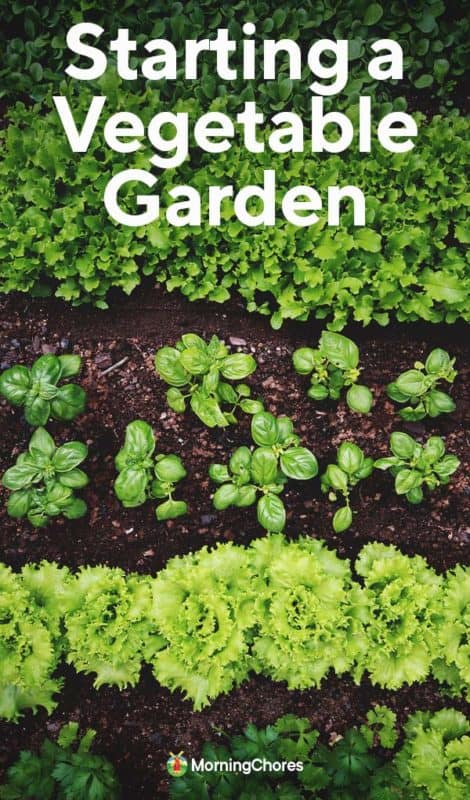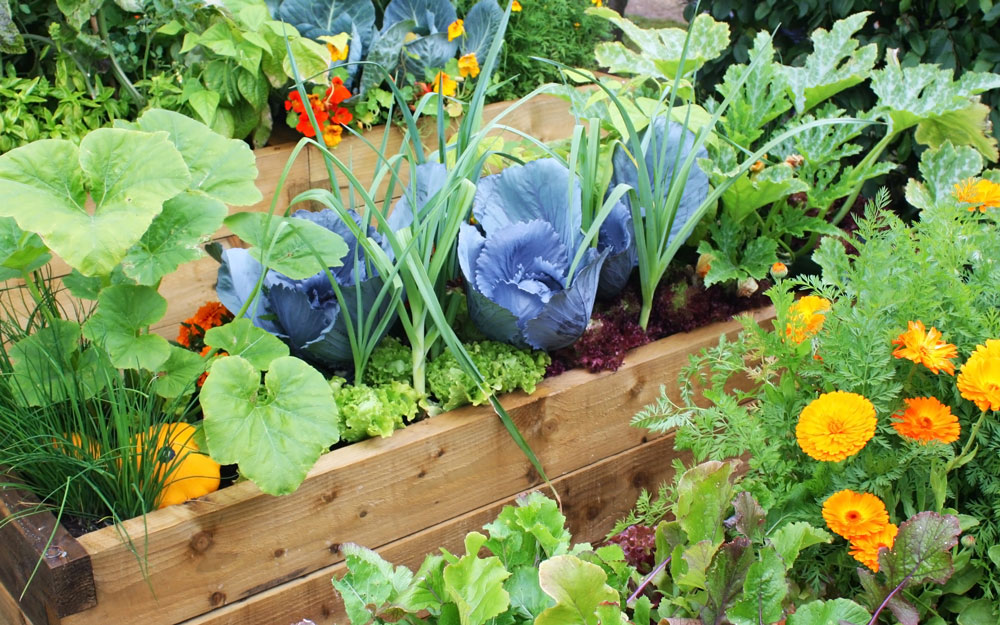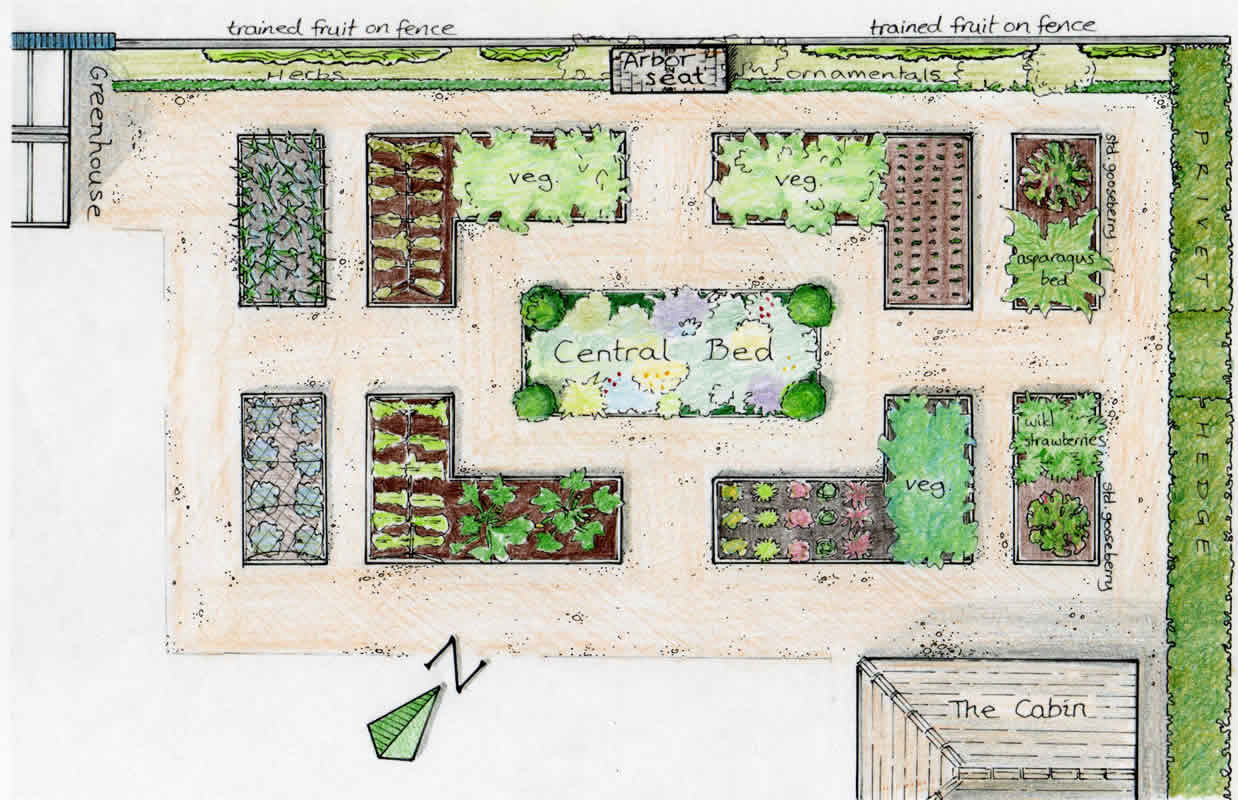The Joy of Vegetable Gardening: An Overview
Embarking on the journey of vegetable gardening offers a wealth of rewards that cater to both the mind and body. By learning how to start a vegetable garden, you open the door to a world of improved mental well-being, physical exercise, and access to fresh, organic produce. This engaging hobby fosters self-sufficiency, deepens your connection with nature, and allows you to cultivate unique and heirloom varieties that may not be readily available at local markets.
To maximize the benefits of vegetable gardening, it is essential to approach the process with careful planning and execution. Understanding the fundamentals of successful vegetable gardening, such as selecting the ideal location, choosing suitable vegetables, and mastering essential planting and nurturing techniques, significantly increases the likelihood of establishing a thriving garden. Embrace the opportunity to learn, experiment, and adapt as you progress, and you will find that the rewards of vegetable gardening extend far beyond the harvest itself.
Choosing the Ideal Garden Space: Location, Location, Location
Selecting the perfect location for your vegetable garden is crucial for its success, as factors such as sunlight exposure, soil quality, and accessibility significantly impact growth. To establish an optimal environment for your plants, consider the following tips when deciding where to situate your garden.
First and foremost, ensure that your garden receives at least six hours of direct sunlight daily. Most vegetables require ample sunlight to photosynthesize, promoting healthy growth and increased yields. Monitor the sunlight patterns in various areas of your property to identify the sunniest spots.
Additionally, assess the soil quality of your chosen location. Vegetables thrive in loose, well-draining soil that is rich in organic matter. If your soil is heavy clay or sandy, consider amending it with compost or other organic matter to improve its structure and fertility. Test your soil for pH levels, as most vegetables prefer a slightly acidic to neutral soil pH (6.0 to 7.0).
Lastly, evaluate the accessibility of your garden space. A garden that is easy to reach and maintain encourages regular care and monitoring. Choose a location that is close to a water source to simplify irrigation, and consider installing paths or walkways to minimize soil compaction and maintain good drainage.
By carefully selecting the ideal location for your vegetable garden, you lay the foundation for a thriving, productive space. With proper planning and execution, you will be well on your way to enjoying the many rewards of vegetable gardening.
Selecting Suitable Vegetables: A Match Made in Soil
Choosing vegetables that are well-suited to your climate, garden space, and personal preferences is a crucial step in ensuring a successful and enjoyable gardening experience. By researching and selecting the best vegetables for your specific situation, you can maximize your chances of establishing a thriving vegetable garden. Here are some tips to help guide your decision-making process when learning how to start a vegetable garden.
First, consider your local climate and growing season when selecting vegetables. Research the average frost dates in your region and choose vegetables that can be planted accordingly. For example, cool-season vegetables like peas, lettuce, and broccoli can be sown earlier in the year, while warm-season vegetables such as tomatoes, peppers, and eggplants require a longer, warmer growing season. Adapting your vegetable choices to your climate will result in healthier plants and higher yields.
Next, evaluate your garden space and assess its limitations and advantages. For instance, if you have limited sunlight or space, opt for vegetables that are shade-tolerant or can be grown in containers. Leafy greens, herbs, and radishes are excellent choices for shady areas or small gardens. If you have ample space, consider growing vegetables that require more room, such as squash, cucumbers, or corn.
Lastly, select vegetables that align with your personal preferences and dietary needs. If you enjoy cooking with fresh produce, consider growing vegetables that are commonly used in your favorite recipes. If you are new to vegetable gardening, start with easy-to-grow vegetables like tomatoes, zucchini, or carrots to build confidence and experience. By growing vegetables that you and your family will consume, you can ensure that your gardening efforts are not wasted and that your harvest is enjoyed to its fullest potential.
By carefully considering your climate, garden space, and personal preferences, you can select vegetables that are perfectly matched to your unique situation. This thoughtful approach to vegetable selection will contribute significantly to your overall success and enjoyment in learning how to start a vegetable garden.
Planting and Nurturing Your Garden: The Path to Success
Planting and nurturing your vegetable garden requires careful planning, dedication, and adherence to essential steps to ensure a thriving, productive space. By following these guidelines, you will create an environment where your plants can flourish and yield a bountiful harvest. Here, we delve into the crucial aspects of planting and nurturing your vegetable garden, emphasizing the importance of patience and commitment in fostering a successful gardening experience.
Preparing the Soil
Healthy, well-prepared soil forms the foundation of a thriving vegetable garden. Begin by removing weeds, rocks, and debris from your garden bed. Next, test your soil for pH levels and nutrient content to determine if amendments are necessary. Most vegetables prefer a slightly acidic to neutral soil pH (6.0 to 7.0). Incorporate organic matter, such as compost or well-rotted manure, to improve soil structure, fertility, and water retention. Aim for a depth of 12 to 18 inches (30 to 45 cm) when preparing your garden bed.
Sowing Seeds
Direct sowing is a cost-effective method of planting vegetables, especially when started indoors is not feasible or preferred. Research the specific planting depth and spacing requirements for each vegetable variety, as these can vary significantly. Sow seeds according to the recommended schedule for your climate and growing season, ensuring that they are planted at the appropriate depth and distance from one another. Thin seedlings as needed to maintain proper spacing and promote healthy growth.
Maintaining Proper Watering and Fertilization Schedules
Consistent watering and fertilization are essential for the health and productivity of your vegetable garden. Aim to water your garden deeply and evenly, promoting strong root growth and drought tolerance. Establish a regular watering schedule based on your local climate, soil type, and vegetable varieties. Additionally, fertilize your garden according to the specific needs of each vegetable, using organic or chemical fertilizers as appropriate. Regularly monitor your plants for signs of nutrient deficiencies or over-fertilization, adjusting your care regimen as needed.
By following these essential steps in planting and nurturing your vegetable garden, you lay the groundwork for a thriving, productive space. With patience, dedication, and a commitment to learning, you can enjoy the rewards of a successful gardening experience and foster a lifelong passion for cultivating fresh, organic produce.
Harvesting Your Bounty: The Fruits of Your Labor
Harvesting your vegetables at the right time is crucial for maximizing flavor, nutritional value, and overall gardening success. By understanding the unique growth patterns and maturity indicators of each vegetable variety, you can ensure a bountiful and rewarding harvest. Here, we provide tips on how to harvest your vegetables at the perfect moment and offer advice on how to store and preserve your harvest, making the most of your gardening efforts.
Timing Is Everything
Harvesting vegetables at the right time is an art that requires patience, practice, and a keen understanding of each vegetable’s growth patterns. Research the specific maturity indicators and harvesting guidelines for each variety in your vegetable garden. For example, some vegetables, like tomatoes and peppers, should be allowed to ripen on the plant until they reach their full color and texture. Others, such as beans and zucchini, are best harvested when they are still tender and relatively small to ensure optimal flavor and texture.
The Art of Harvesting
When harvesting your vegetables, use clean, sharp tools to minimize damage to the plant and its surrounding foliage. For root vegetables, loosen the soil around the base of the plant before gently lifting the vegetable from the ground. For above-ground vegetables, cut the stem with sharp scissors or pruners, leaving a short length attached to the vegetable to prevent damage to the plant. Always handle your harvested vegetables gently to avoid bruising or breaking the skin, which can lead to spoilage and reduced shelf life.
Storing and Preserving Your Harvest
Proper storage and preservation techniques can significantly extend the life of your harvest and help you make the most of your gardening efforts. For short-term storage, keep vegetables in a cool, dark, well-ventilated area, such as a basement or root cellar. For longer storage, consider preserving your harvest through methods like canning, freezing, or dehydrating. These techniques not only extend the shelf life of your vegetables but also allow you to enjoy the fruits of your labor during the off-season, providing a constant source of fresh, organic produce for you and your family.
By mastering the art of harvesting, storing, and preserving your vegetables, you can maximize the rewards of your gardening experience and enjoy a bountiful, flavorful harvest. Embrace the opportunity to learn, experiment, and adapt as you progress, and you will find that the joy of vegetable gardening extends far beyond the harvest itself.
Troubleshooting Common Issues: Overcoming Obstacles
As a novice gardener, you may encounter various challenges that can hinder the growth and productivity of your vegetable garden. Common issues such as pests, diseases, and poor growth can be disheartening, but with the right knowledge and strategies, you can overcome these hurdles and maintain a healthy, productive garden. Here, we discuss practical solutions and preventative measures to help you troubleshoot and manage these common challenges, fostering a thriving vegetable garden.
Pests and Diseases
Pests and diseases are common threats to vegetable gardens, but there are several ways to minimize their impact. Begin by identifying the specific pests or diseases affecting your plants, as this will help you determine the most effective course of action. Some general strategies for managing pests and diseases include:
- Encouraging beneficial insects and animals, such as ladybugs, spiders, and birds, which prey on common garden pests.
- Utilizing organic or chemical pesticides and fungicides, following the manufacturer’s instructions carefully to ensure safe and effective application.
- Practicing crop rotation to prevent the buildup of pests and diseases in the soil.
- Removing and destroying affected plant material to prevent the spread of diseases.
Poor Growth
Poor growth in your vegetable garden can be caused by various factors, including inadequate watering, nutrient deficiencies, and poor soil quality. To address poor growth, consider the following strategies:
- Ensure that your plants receive the appropriate amount of water, as both over- and under-watering can negatively impact growth. Aim for consistent, deep watering to promote strong root development and drought tolerance.
- Test your soil for nutrient content and pH levels, amending it as necessary to create an optimal growing environment. Incorporate organic matter, such as compost or well-rotted manure, to improve soil structure, fertility, and water retention.
- Monitor your plants for signs of nutrient deficiencies or toxicities, adjusting your fertilization schedule and methods as needed to maintain proper nutrient levels.
By understanding and addressing these common challenges, you can troubleshoot and manage issues in your vegetable garden, fostering a thriving, productive space. Embrace the learning process, and remember that every challenge presents an opportunity to grow as a gardener and expand your knowledge and skills.
Expanding Your Horizons: Taking Your Garden to the Next Level
As a vegetable gardener, you have already embarked on a rewarding journey filled with mental well-being, physical exercise, and access to fresh, organic produce. To maintain your passion and continue growing, consider expanding your horizons by experimenting with new techniques, vegetables, and garden designs. By adapting to changing conditions and sharing your knowledge with others, you can foster a lifelong love for vegetable gardening and enjoy the numerous benefits it offers.
Experimenting with New Techniques
Incorporating innovative techniques into your vegetable gardening routine can help keep your passion alive and improve your overall gardening experience. Some new techniques to consider include:
- Vertical gardening: Utilize trellises, wall planters, or hanging baskets to grow vegetables vertically, maximizing space and adding visual interest to your garden.
- Container gardening: Grow vegetables in containers to create a portable, flexible, and space-saving garden that can be moved and rearranged as needed.
- Hydroponics and aquaponics: Explore soilless gardening methods that utilize nutrient-rich water solutions to grow vegetables, offering a unique and sustainable alternative to traditional gardening.
Discovering New Vegetables
Expanding your vegetable repertoire can introduce you to new flavors, textures, and gardening challenges. Research and select unique or lesser-known vegetable varieties that are well-suited to your climate and garden space. By growing a diverse range of vegetables, you can enhance your culinary experiences and keep your gardening adventures fresh and exciting.
Collaborating and Sharing Knowledge
Connecting with other gardeners and sharing your knowledge can help you grow as a vegetable gardener and foster a sense of community. Join local gardening clubs, participate in online forums, or attend workshops and conferences to learn from others and share your own experiences. By collaborating and exchanging ideas, you can adapt to changing conditions, overcome obstacles, and continue to develop your skills and passion for vegetable gardening.
By embracing new techniques, vegetables, and garden designs, you can take your vegetable gardening experience to the next level. Continually learning, experimenting, and adapting to changing conditions will help maintain your enthusiasm and ensure a lifelong passion for vegetable gardening. Remember, the journey is just as important as the destination, so enjoy every step of the way and reap the rewards of your labor.








